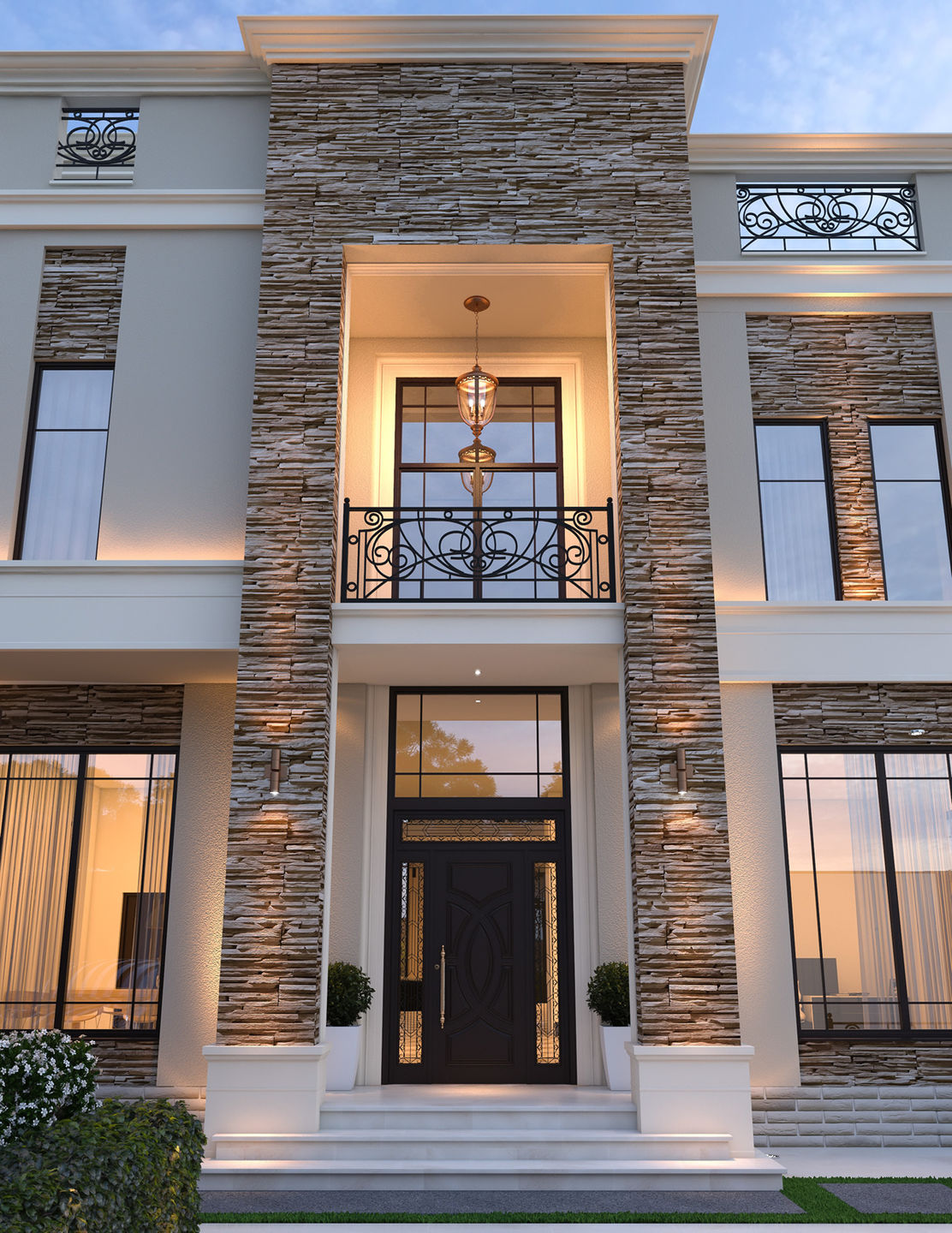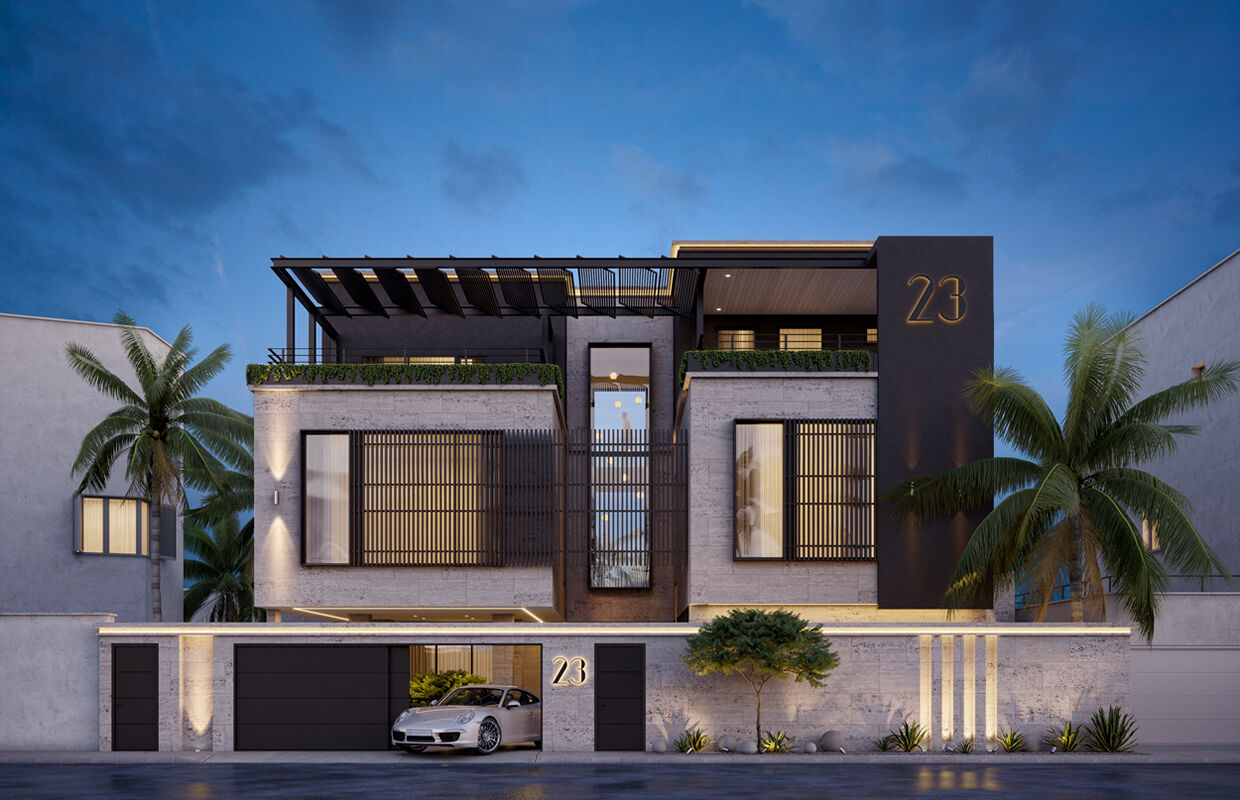The Enduring Appeal of Classic Modern house Design
Classic modern house design, a style that emerged in the early to mid-20th century, continues to resonate deeply with homeowners and architects alike. It’s a testament to the power of simplicity, functionality, and a harmonious relationship with the surrounding environment. This style, often misconstrued as cold or sterile, actually fosters warmth and connection through its thoughtful integration of natural light, open layouts, and honest materials. Let’s delve into the key principles and enduring appeal of this iconic architectural movement.
The roots of classic modernism lie in a rejection of ornate, historical styles that dominated the 19th and early 20th centuries. Architects like Le Corbusier, Mies van der Rohe, and Frank Lloyd Wright championed a new approach, one that embraced industrial materials, technological advancements, and a focus on human needs. This movement, born out of a desire for clarity and efficiency in a rapidly changing world, sought to create homes that were both beautiful and practical.

Form Follows Function
This foundational principle dictates that the design of a building should prioritize its intended purpose. Ornamentation is secondary, and every element should serve a functional role. This emphasis on utility leads to clean lines, uncluttered spaces, and a sense of effortless efficiency.
Open Floor Plans
Classic modern homes often feature open floor plans, where living spaces flow seamlessly into one another. This creates a sense of spaciousness and encourages social interaction. The elimination of unnecessary walls allows for better circulation of light and air, enhancing the overall feeling of openness.
Emphasis on Natural Light
Large windows, skylights, and strategically placed glass doors are hallmarks of classic modern design. Maximizing natural light not only brightens interiors but also creates a connection with the outdoors. This emphasis on light contributes to a sense of well-being and enhances the beauty of the surrounding landscape.
Honest Materials

Classic modern architecture celebrates the inherent beauty of materials like concrete, steel, glass, and wood. These materials are often left exposed, showcasing their texture and natural characteristics. This honesty in material selection adds a sense of authenticity and timelessness to the design.
Integration with Nature
Classic modern homes often feature seamless transitions between indoor and outdoor spaces. Patios, decks, and floor-to-ceiling windows blur the lines between interior and exterior, creating a sense of harmony with the surrounding environment. This connection to nature is a crucial element in fostering a sense of tranquility and well-being.
Clean Lines and Minimalist Aesthetics
Simplicity is key to classic modern design. Clean lines, geometric forms, and a lack of unnecessary ornamentation create a sense of visual clarity and calm. This minimalist approach allows the beauty of the materials and the spatial relationships to take center stage.

The selection and use of materials play a crucial role in defining the character of a classic modern home.
Concrete
Concrete, with its raw, industrial aesthetic, is a staple of modern architecture. It can be used for structural elements, floors, and even countertops. Its durability and versatility make it a practical and visually striking material.
Steel
Steel, another industrial material, is often used for structural framing, window frames, and railings. Its strength and sleek appearance contribute to the clean, minimalist aesthetic of modern design.
Glass
Glass is essential for maximizing natural light and creating a sense of transparency. Large expanses of glass are used for windows, doors, and even walls, blurring the boundaries between interior and exterior.
Wood
Wood, with its warmth and natural beauty, provides a counterpoint to the cooler materials like concrete and steel. It can be used for flooring, cabinetry, and structural elements, adding a touch of organic texture to the design.
The interior design of a classic modern home should complement the architectural style, maintaining a sense of simplicity and functionality.
Open and Uncluttered Spaces
The open floor plan should be reflected in the interior design, with furniture and decor kept to a minimum. Clutter is the enemy of modernism, and a sense of spaciousness should be prioritized.
Neutral Color Palettes
Neutral colors like white, gray, and beige are often used to create a sense of calm and sophistication. These colors also allow the natural light and the beauty of the materials to take center stage.
Simple and Functional Furniture
Furniture should be chosen for its clean lines, simple forms, and functionality. Pieces with integrated storage and multi-functional designs are ideal for maximizing space and minimizing clutter.
Art and Decor: Minimalist Statements
Art and decor should be carefully selected to complement the minimalist aesthetic. Large-scale abstract paintings, sculptures, and carefully curated collections can add visual interest without overwhelming the space.
Lighting: Layering Light for Ambiance
Lighting plays a crucial role in creating a warm and inviting atmosphere. Layered lighting, including ambient, task, and accent lighting, allows for flexibility and control over the mood of the space.
Classic modern house design has stood the test of time for several reasons.
Timeless Aesthetics
The simplicity and clarity of classic modern design create a timeless aesthetic that transcends trends. The focus on essential elements and the avoidance of unnecessary ornamentation ensure that these homes remain relevant and appealing for generations.
Functionality and Efficiency
The emphasis on functionality and efficiency makes classic modern homes practical and comfortable to live in. Open floor plans, ample natural light, and well-designed spaces contribute to a sense of ease and well-being.
Connection to Nature
The integration with nature, a hallmark of classic modern design, fosters a sense of tranquility and connection to the environment. This connection is particularly important in today’s fast-paced world, where people seek refuge and respite from the stresses of daily life.
Flexibility and Adaptability
The open floor plans and flexible spaces of classic modern homes allow for easy adaptation to changing needs and lifestyles. These homes can be easily modified to accommodate different family structures and evolving preferences.
Sustainability
The emphasis on natural light, passive solar design, and the use of durable materials makes classic modern homes inherently sustainable. These principles align with contemporary concerns about environmental impact and energy efficiency.
While the core principles of classic modern design remain relevant, contemporary interpretations have incorporated new technologies, materials, and design approaches.
Sustainable Materials and Technologies
Modern interpretations often incorporate sustainable materials like bamboo, reclaimed wood, and recycled steel. They also integrate energy-efficient technologies like solar panels, geothermal heating, and smart home systems.
Biophilic Design
Biophilic design, which emphasizes the connection between humans and nature, is increasingly incorporated into modern interpretations. This approach involves incorporating natural elements like living walls, indoor gardens, and natural light into the design.
Personalization and Customization
Modern interpretations allow for greater personalization and customization, reflecting the unique preferences and lifestyles of homeowners. This can involve incorporating custom millwork, unique finishes, and personalized layouts.
Technological Integration
Modern interpretations seamlessly integrate technology into the design, enhancing comfort, convenience, and efficiency. Smart home systems, automated lighting, and integrated entertainment systems are common features of contemporary modern homes.
Classic modern house design, with its emphasis on simplicity, functionality, and connection to nature, continues to inspire and influence contemporary architecture. Its timeless aesthetics, practical features, and sustainable principles ensure that it remains a relevant and desirable style for homeowners and architects alike. By understanding and appreciating the core principles of this iconic movement, we can continue to create homes that are both beautiful and livable for generations to come. The legacy of classic modernism is not just a style, but a philosophy of living, one that celebrates clarity, efficiency, and the harmonious relationship between humans and their environment.



